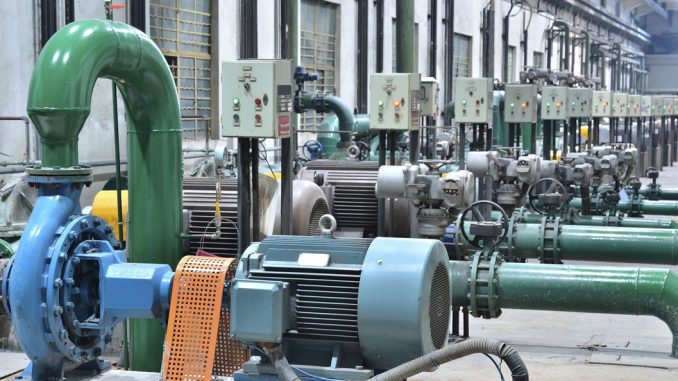
They used to say Aquatherm polypropylene pipe could not fail – so you are probably wondering why somebody has bothered to put together an article on how to repair it?
The simple answer – and if you are reading this, then chances are you are going through first-hand experience of it – is that the idea of a pipe material which cannot fail is a myth.
Eventually, all pipe materials will degrade and become susceptible to leaks and bursts. Some have a shelf life of a decade. Others might go on for half a century. At some point though, problems will start to occur.
It is a fact of (current) engineering. Aquatherm will not be the first to claim it is unbreakable. And it will not be last. Let’s just thank our lucky stars that when it goes wrong, it does not do so in such spectacular style as prestressed concrete cylinder pipe.
What is aquatherm pipe?
Aquatherm is actually the name of a German company who became the European leader of polypropylene piping. Their brand has become synonymous with this type of plastic pipe, in much the same way as Teflon is associated with PTFE, you Hoover your home with a vacuum cleaner and any type of sticky tape is referred to as Sellotape.
Polypropylene is popular for pipework because it does not react with water, preventing leaching, corrosion, scaling and erosion – all major causes of water contamination and long-term pipeline failure. When installed correctly, Aquatherm was thought to be the failsafe material for transporting water.
What causes polypropylene to fail?
The problem with polypropylene comes when pipes are either not installed properly or operated incorrectly. The increase in reported failures of Aquatherm pipe came when the company expanded from Europe and into North America and Australia.
Suddenly, Aquatherm was being used on different continents where different practices were in place. All it took was one manufacturer, installer or operator to not follow the required process and you had a polypropylene pipe ripe for failure.
Polypropylene has three main vulnerabilities: Water temperature and chemistry, excessive clamping and the presence of metal. An installer may clamp sections of pipe together incorrectly. An operator might run water at too high a temperature though the system.
Either mistake can lead to failure in the pipe. That makes it hard to apportion liability when systems do go wrong. The blame game becomes especially muddy when incorrect guidance is given by the manufacturer of the polypropylene.
There are countless examples of lawsuits issued where all three parties have pointed the finger at one of the others for a system failure. Most of these end up settled out-of-court, meaning that the details are kept secret.
That in turn hardly helps the situation. If reasons are found for cracks and bursts appearing in Aquatherm, then it is in everyone’s interest for these to be made public so that lessons can be learned by all parties to limit future breakages.
Aquatherm polypropylene pipe repair – what you should NEVER do
When talking about the vulnerabilities of polypropylene so far, we have skipped over the issues with metal. Polypropylene reacts badly when coming into contact with water containing too much copper ion.
One of the biggest causes of problems to Aquatherm pipe comes when repairs or reinforcements to it are made using copper or iron pipe. This can lead to different coefficients of thermal expansion and severe cracks appearing – which is bad news, obviously.
How to repair Aquatherm polypropylene pipe
Another of the benefits of Aquatherm polypropylene pipe is that because it does not react with water, systems can operate at a faster flow speed compared to where copper pipe is used.
Whilst this is excellent news in district heating system for example, where you want water to reach the extremities of the network whilst still hot, it is bad news when cracks develop as more water escapes.
Reacting quickly is of the essence for Aquatherm polypropylene pipe repair to prevent too much water damage occurring. If you can isolate the pipe, do so as soon as possible before considering your next move.
This of course will not always be possible. To use district heating repair as an example again, often it is not feasible to shut off a system supplying heat to multiple homes, rooms or areas of a building.
You therefore need a repair method that does not rely on specialist parts or labour being delivered, but one which can be effectively quickly and easily – like a SylWrap Pipe Repair Kit.
Each kit contains the products needed to make a two-stage live leak repair effective on polypropylene in under 30 minutes with no specialist training required.
The first stage involves sealing the leak with Wrap & Seal Pipe Burst Tape. Wrap & Seal is made from self-amalgamating silicone and stretches by 300 percent its length.
It fuses to form a solid rubber band over leak areas. Multiple tapes can be fused to each other, creating a repair with pressure resistance up to 30 bar.
The pipe is then encompassed with a SylWrap HD Pipe Repair Bandage. SylWrap HD is a composite wrap with a water-activated resin which sets rock hard in minutes, reinforcing the repair via an impact resistant protective sleeve.
SylWrap has been approved by one of the United Kingdom’s leading specialists in installing and maintaining sustainable energy generation systems in public buildings, residential developments, factories and manufacturing sites.
The energy company now equip their contractor vans with SylWrap to make emergency repairs as soon as leaks and bursts occur to their district heating and other systems.
When they first started working with Aquatherm, they did not imagine that they would need a pipe repair solution. They now at least have one, effective on the material that was meant to be unbreakable.

Leave a Reply